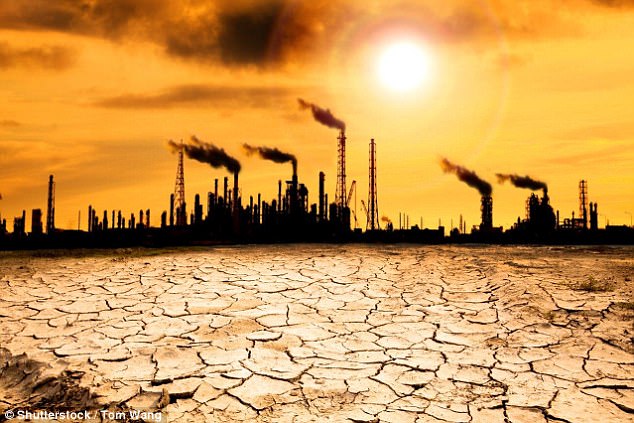Killer heat waves will become increasingly prevalent in regions across the globe as warming of the planet continues, climate scientists say.
However most projections leave out a major factor, humidity, which could worsen things by greatly magnifying the effects of heat alone.
Now, a new global study projects that in coming decades the effects of high humidity will cause suffering for hundreds of millions of people.
This could leave inhabitants of affected regions unable to work and, in some areas, threaten to cause a spate of heat related deaths.
The findings were made by researchers at the Earth institute at Columbia University in New York.
Potentially affected regions include large swaths of the already muggy southeastern United States, the Amazon, western and central Africa, southern areas of the Middle East and Arabian peninsula as well as northern India and eastern China.
Using global climate models, experts in mapped current and projected future ‘wet bulb’ temperatures, which reflect the combined effects of heat and humidity.
The measurement is made by draping a water-saturated cloth over the bulb of a conventional thermometer, it does not correspond directly to air temperature alone.
The study found that by the 2070s, high wet-bulb readings that now occur only once a year could occur between 100 and 250 days of the year in some parts of the tropics.
Worldwide, hundreds of millions of people would suffer.
Lead author Ethan Coffel, a graduate student at Columbia’s Lamont-Doherty Earth Observatory, said: ‘The conditions we’re talking about basically never occur now–people in most places have never experienced them.
‘But they’re projected to occur close to the end of the century.’
The hardest-hit area in terms of human impact, the researchers say, will probably be densely populated northeastern India.
In the southeast United States, wet-bulb temperatures now sometimes reach an already oppressive 29 or 30°C (84 or 86°F)
By the 2070s or 2080s, such weather could occur 25 to 40 days each year, say the researchers.
Lab experiments have shown wet-bulb readings of 32°C (89°F) are the threshold beyond which many people would have trouble carrying out normal activities outside.
This level is rarely reached anywhere today.
But the study projects that by the 2070s or 2080s the mark could be reached one or two days a year in the US’s southeast, and three to five days in parts of South America, Africa, India and China.
The study projects that some parts of the southern Mideast and northern India may even sometimes hit wet-bulb 35°C (95°F) by late century–equal to the human skin temperature, and the theoretical limit at which people will die within hours without artificial cooling.
‘Lots of people would crumble well before you reach wet-bulb temperatures of 32°C, or anything close,’ said coauthor Radley Horton, a climate scientist at Lamont-Doherty.
‘They’d run into terrible problems.’
Horton said the results could be ‘transformative’ for all areas of human endeavor–‘economy, agriculture, military, recreation.’
The full findings of the study will be published in the journal Environmental Research Letters.












